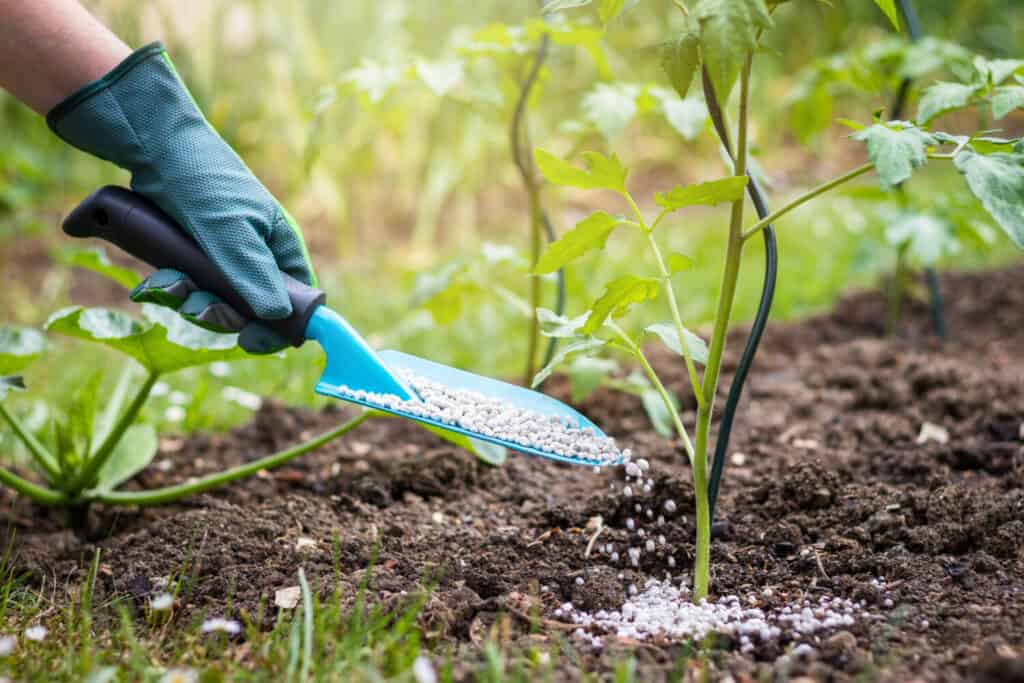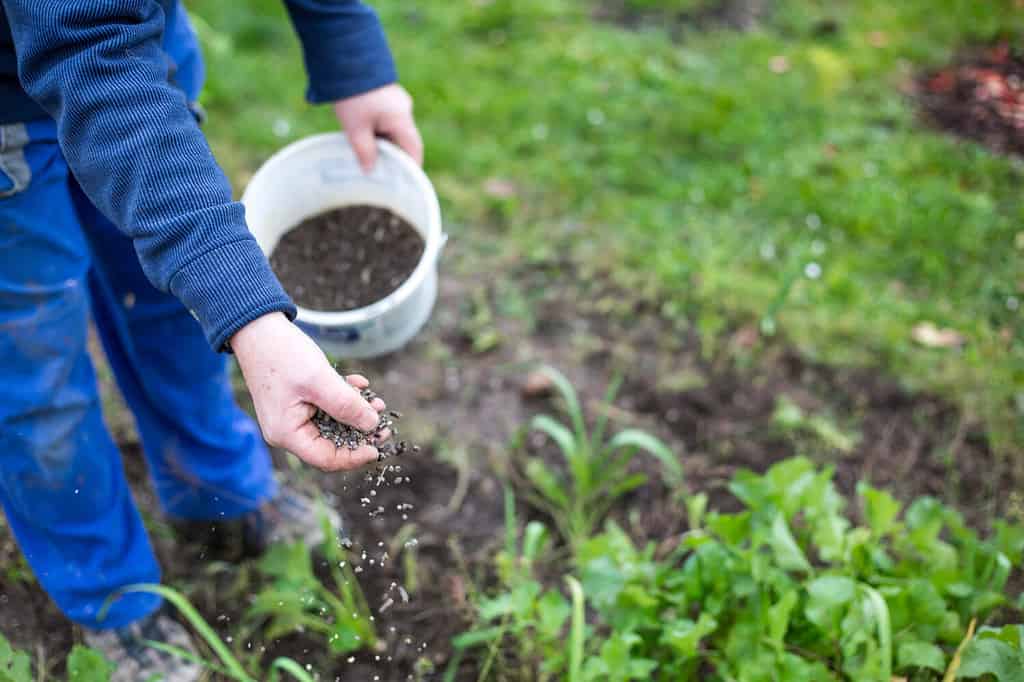When winter is near, you can feel it. The temperature of the breeze changes and nightfall arrives much too early. As you make your indoor preparations, removing blankets and jackets from their storage bins and replacing them with your summer clothes, you also have to consider your outdoor preparations. Part of lawn care requires fertilizer — and for the season just before winter, you need a solid winter fertilizer formula. Not just that but you need to get the timing right. Discover the ideal time to apply winter fertilizer to your lawn!
What Is Winter Fertilizer?
Winter fertilizer is a type of fertilizer you use on cool-season grasses so you can keep them well-fed just before temperatures drop during the winter season. It helps your lawn because it allows it to store some food and keep it healthy to survive the winter months. By the time spring rolls around, your lawn has all the nutrients it needs to literally spring to life once the weather warms.
Earlier in the year, you apply a fertilizer that helps to enhance fall grass growth but a winter fertilizer, also known as a winterizer, works differently. Instead of helping with top growth, it goes straight to your lawn’s roots so they can absorb the nutrients to help it recover quickly when winter comes to an end.
During the winter months, your lawn needs more potassium because it is essential for root growth and assists with helping your lawn survive the freezing temperatures. Along with potassium, winter fertilizers also incorporate nitrogen. Typically, there is a 2 to 1 ratio of nitrogen to potassium in winterizer formulas.

Winter fertilizer helps your lawn and plants survive the cold temperatures during the winter season.
©encierro/Shutterstock.com
This fertilizer formula ensures that your lawn can store enough food and energy. But winter fertilizer only works if you apply it at the right time. A quick-release, water-soluble formula is ideal for winter fertilizer formulas. Additionally, there are some tips you need to know to ensure success — we discuss more like when to apply winterizer and the steps you need to take beforehand for the best results.
The Ideal Time to Apply Winter Fertilizer to Your Lawn
The best time to apply winter fertilizer ranges slightly depending on your location. However, in most places, it should be applied during late fall. For areas that experience colder weather sooner, you can expect this period to fall anywhere between mid-October to late October. However, other regions may require you to apply winter fertilizer during the early part of November.
Getting the timing right is extremely important. Once you know the exact time for your region, you set up your lawn for proper absorption and storage of the essential nutrients it needs before winter finally arrives. Your lawn is going to have stronger root systems and will be more resilient overall as a result of this timely care you put in.
Winterizer works best when your lawn has stopped growing and it’s starting to prepare for the cold weather. After application, the roots keep growing until winter moves in and freezes the ground. If your grass has already died and changed color, the winterizer is not going to be able to help it. In fact, many locations have specific regulations about when to apply winter fertilizer. When it’s applied too late, it just runs off and pollutes the groundwater.

Winter fertilizer helps your lawn and plants so when spring rolls around, they bounce back quickly and with ease.
©JoannaTkaczuk/Shutterstock.com
Types of Winter Fertilizer
You’re going to come across several different options when shopping for winter fertilizer. It’s important to understand your options and which nutrients work best for your climate and soil. We’ve mentioned potassium and nitrogen but there’s one other nutrient that winterizer formulas include that help with promoting lawn growth: phosphorus. Nitrogen is included to help with leaf growth, but potassium is included in greater quantities because it helps with hardiness and root growth. Phosphorus also plays a vital role in ensuring root growth.
Along with understanding the primary nutrients in the winterizer formula, you also have a few options when it comes to the types to choose from. They include the following:
Granular Winterizer
This type of winter fertilizer is made up of many granules that you can spread by hand or with a spreader. They are designed to dissolve slowly, releasing the essential nutrients over an extended period of time. They require watering to fully activate, though.
Liquid Winterizer
A liquid winterizer comes equipped with dissolved minerals, so it doesn’t require watering for activation. Just use a sprayer to coat your lawn! Keep in mind that this winterizer absorbs quickly, so you’ll see results faster.
Tips For Applying Winter Fertilizer
Test Your Soil
Before you apply your winterizer, make sure that you test your soil. This lets you know the health of your soil and can ensure that you are applying the right kind of fertilizer and formula it needs. If you don’t have a clear idea of the nutrients contained within your soil before applying the fertilizer, you might make a mistake and over-fertilize it or under-fertilize it.
Get the Timing Right
Remember that the ideal time for applying winterizer is highly dependent on your specific region. However, it’s typically between mid-October to early November. If you apply it too early, you may end up getting too much top growth that cannot survive the winter months.

Winter fertilizer is only effective when used at the right time, typically between mid-October to early November.
©Simon Kadula/Shutterstock.com
Then again, if you wait too long, your lawn and plants don’t get enough time to fully soak up the nutrients they need. If the ground has already frozen, save your winterizer for next year. It simply won’t do any good at this point and instead of doing what it’s supposed to, it becomes a pollutant to groundwater.
Use the Correct Formula
Remember that a good winter fertilizer has a higher concentration of potassium as opposed to other fertilizers that may have a higher level of nitrogen. Be sure to double-check your formula before application.
Check the Weather Forecast
You’ve taken all the right steps, you figured out the timing, and you’re ready to apply your winterizer. Before you do that, check the weather forecast. If you have a storm coming in within the next 24 to 48 hours, wait until it passes. You want to give your lawn and plants enough time to fully absorb the nutrients you’re applying and if rain falls too soon after application, it’ll wash away, defeating your efforts and polluting the groundwater.
Practice Lawn Care Year-Round
Winterizer is just one step you take during a specific season to take care of your lawn. However, lawn care is about more than winterizer. Make sure that you’re also using fertilizer during other times of the year, that you’re watering at regular intervals, and that you are being mindful of pests like grubs to ensure that you have the kind of green, neatly manicured lawn that makes you feel proud to pull into your driveway.
Apply Less Than You Think You Need
To ensure that you’re not contributing to water pollution, apply less winter fertilizer than you think you need. If you’re using a granular formula, try applying half or even a third of the manufacturer’s recommended amount. If you’ve opted for a liquid fertilizer, you can reduce the amount you use even further.
When In Doubt, Call a Pro
Doing things yourself can help you save money and put you in the know and in control. However, if you regularly outsource your lawn care, you may benefit from having a lawn expert take care of winter fertilizing for you. This way, you can just enjoy a cup of tea or coffee and continue with your indoor preparations as winter approaches.
The photo featured at the top of this post is © Singkham/iStock via Getty Images
Thank you for reading! Have some feedback for us? Contact the AZ Animals editorial team.







